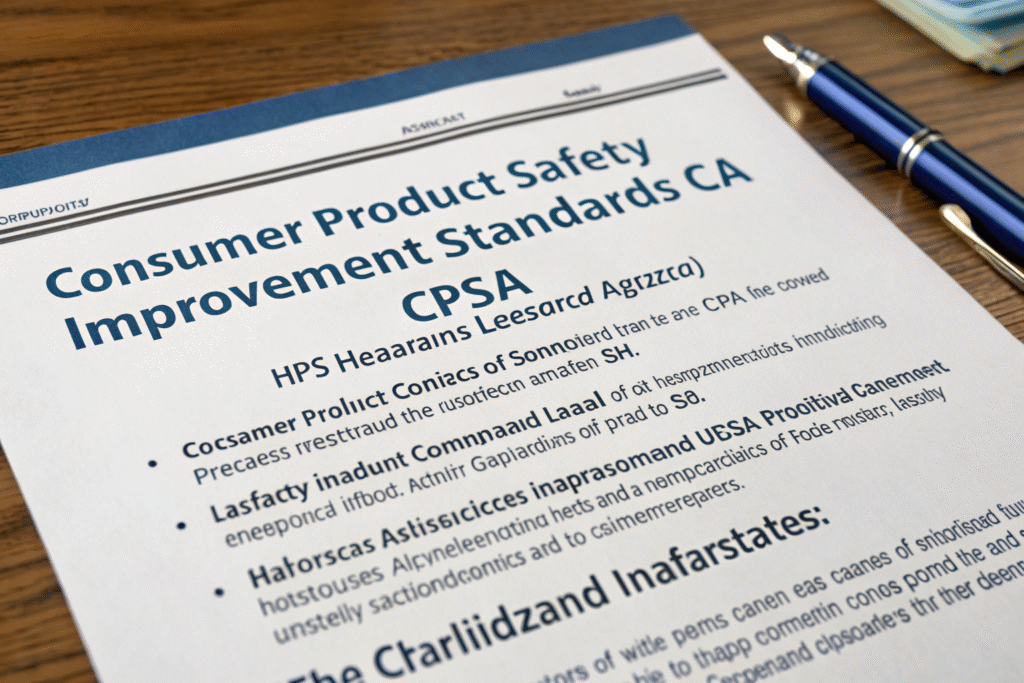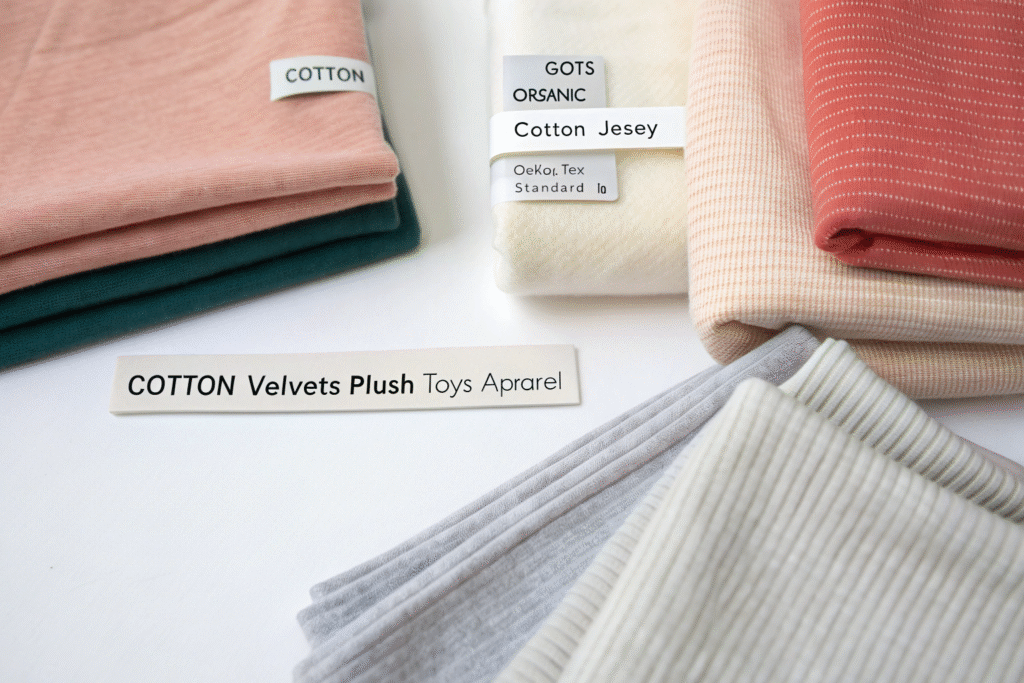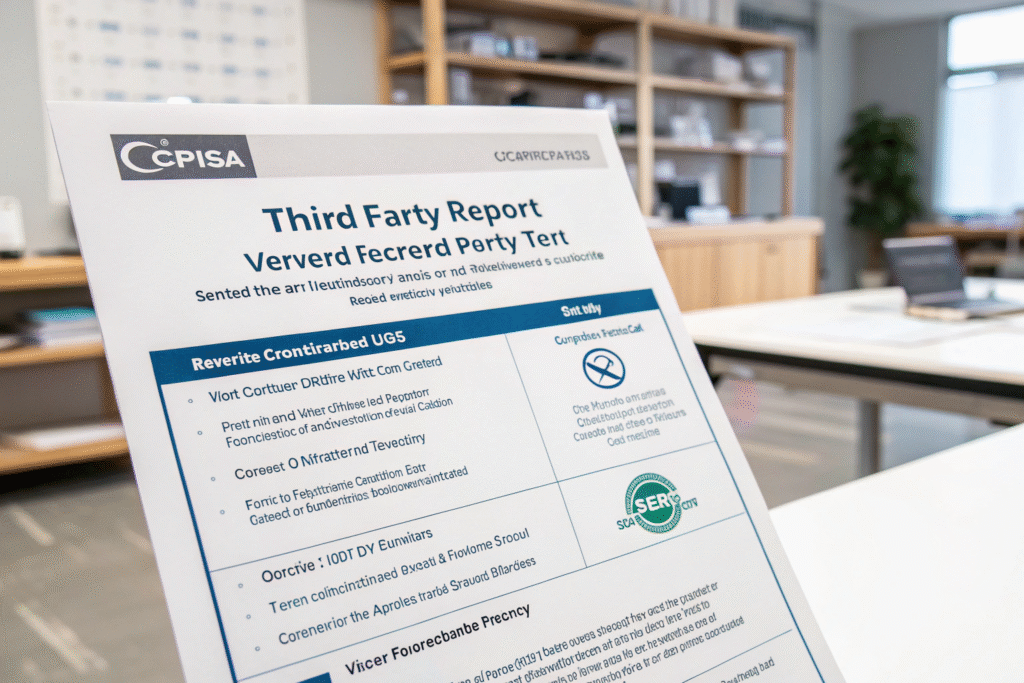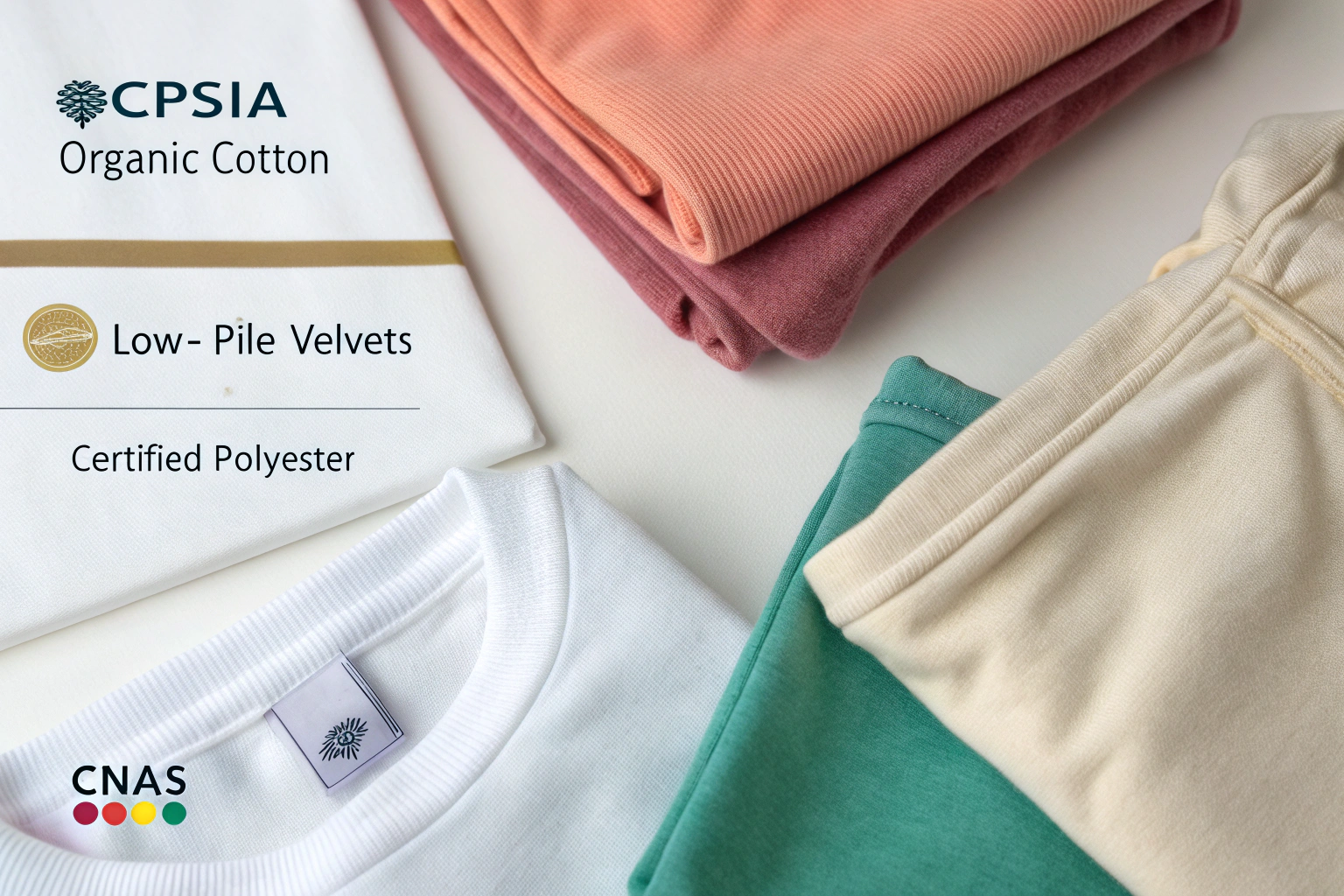As a fabric supplier with over two decades of experience, I often hear this critical question from American brands. The Consumer Product Safety Improvement Act (CPSIA) sets strict safety standards for children's products sold in the United States. Navigating these regulations can feel overwhelming. You need fabrics that are not only safe and compliant but also durable and comfortable for kids. Choosing the wrong material can lead to rejected shipments, financial losses, and reputational damage.
The fabrics that meet CPSIA requirements for children's apparel are those that consistently pass tests for lead and phthalate content, exhibit no flammability hazards, and are made from safe, certified fibers. As a leading provider, we specialize in CPSIA-compliant fabrics like organic cotton, low-pile velvets, and certified polyester, which we rigorously test in our CNAS-accredited lab to ensure your garments pass U.S. customs and retail audits with ease.
Understanding the "why" behind compliance is just as important as the "what." Let's unravel the key aspects of CPSIA-compliant fabrics, from material selection to testing protocols, so you can source with absolute confidence.
What are the CPSIA limits for lead and phthalates?
The CPSIA sets clear numerical limits for hazardous substances. For lead, the standard is strict. Any accessible component part of the product must contain less than 100 parts per million (ppm). For phthalates, the rule targets six specific types. The combined level of these six phthalates in any plasticized component must be below 0.1%. These are non-negotiable limits for children's apparel aged 12 and under.
In short, the CPSIA mandates that surface coatings on fabrics contain less than 90 ppm of lead and substrates contain less than 100 ppm. For phthalates, which are often found in plastisol prints or synthetic leather appliqués, the limit for six specific types is 0.1%. This makes material selection and decoration techniques paramount. You cannot assume a fabric is safe; you must verify through testing.

How are fabrics tested for CPSIA compliance?
Testing is the only way to guarantee compliance. Accredited third-party labs, like those providing SGS testing services, perform the analysis. The process involves taking swatches of the fabric and all its components—including prints, buttons, and zippers—and subjecting them to sophisticated chemical analysis. Techniques like Inductively Coupled Plasma (ICP) spectroscopy are used for lead detection, while Gas Chromatography-Mass Spectrometry (GC-MS) is employed for phthalate analysis. It's crucial to test the final production fabric, not just the initial prototype, as dyes and finishes from different batches can vary.
Why is fiber choice critical for meeting CPSIA standards?
Your choice of fiber is the first line of defense. Natural fibers like organic cotton and wool are inherently free from phthalates and have minimal lead risk, making them excellent starting points. For synthetic fibers, the purity of the raw materials is key. We use polyester that is certified to be manufactured without restricted phthalates. The real danger often lies not in the base fabric but in the decorations. A simple organic cotton t-shirt becomes non-compliant if it features a plastisol print containing banned phthalates. Therefore, selecting a supplier who controls the entire supply chain, from fiber to finish, is your best strategy.
Which fabric types are safest for kids' clothing?
When safety is the priority, some fabric types naturally stand out. The safest choices are those made from inherently safe fibers and constructed without risky chemical treatments or decorative add-ons. Fabrics that are simple in construction and finishing have fewer variables that could lead to compliance issues, offering you peace of mind.
The safest fabric types for kids' clothing are inherently flame-resistant materials like polyester and wool, tight-weave natural fibers like cotton and linen, and low-pile textiles. These choices minimize risks associated with flammability, chemical exposure, and choking hazards from loose fibers. Always pair these base materials with compliant dyes and prints. For instance, we recommend our GOTS-certified organic cotton jersey or our Oeko-Tex Standard 100 certified low-pile cotton velvets for plush toys and apparel.

What makes natural fibers a low-risk option?
Natural fibers are often a low-risk option because they are less processed. Cotton, linen, and wool are breathable, biodegradable, and typically do not require the chemical plasticizers that are a common source of phthalates. Their natural structure also means they are less likely to be treated with heavy metal-based dyes. However, "natural" does not automatically mean "compliant." Conventionally grown cotton may use pesticides with heavy metals, and the dyes applied to it can contain lead. This is why we advocate for and supply certified organic natural fibers, which are grown and processed under strict protocols that prohibit such substances.
How does fabric construction impact safety?
The way a fabric is built directly affects its safety. A tight plain weave or a sturdy knit is less likely to pose a flammability hazard compared to a loose, fluffy pile fabric. The U.S. Flammable Fabrics Act has specific standards for children's sleepwear, requiring fabrics to be flame-resistant. This is where synthetic fibers like polyester, which can be engineered to be inherently flame-retardant, have an advantage. Conversely, pile fabrics like plush velvets or faux furs can be a choking hazard if they shed excessively. Our quality control includes pilling and shedding tests to ensure that even our fun textured fabrics are safe for child use.
How to verify your fabric supplier is CPSIA-compliant?
Trust is good, but verification is essential. You cannot risk your brand's reputation on a supplier's word alone. A compliant supplier will have a transparent and documented system for quality assurance. They should welcome your questions and provide evidence of their compliance processes without hesitation.
You verify a supplier's CPSIA compliance by requesting and reviewing their third-party test reports from accredited labs like ITS or Bureau Veritas, auditing their quality control systems, and confirming their use of certified raw materials. A reliable partner will have a track record of shipping compliant goods to the U.S. market. Ask for a copy of a recent test report for a fabric similar to what you plan to order. Check if the report is from a CPSC-accepted laboratory.

What documentation should a reliable supplier provide?
A professional supplier will provide a comprehensive documentation package. This includes a Certificate of Compliance (CoC) stating that the product meets CPSIA requirements, supported by detailed test reports from an accredited third-party lab. They should also provide documentation for their raw materials, such as a GOTS certificate for organic cotton or an Oeko-Tex certificate for the dyes. We provide a full digital dossier for our clients, accessible via a QR code on the roll, which includes composition, test reports, and origin information. This level of transparency is what separates true partners from simple vendors.
What are the red flags in a supplier's quality claims?
Be wary of suppliers who are vague about their testing protocols. Major red flags include refusing to provide test reports, offering prices that seem too good to be true for compliant fabrics, or having no understanding of CPSIA requirements. Another warning sign is a supplier who cannot trace the origin of their yarns or dyes. If they cannot tell you where their materials come from, they cannot guarantee their safety. We invest in a CNAS-accredited in-house lab precisely so we can conduct pre-shipment checks and give our clients real-time data, eliminating guesswork and last-minute surprises.
Can you avoid US tariffs on CPSIA-compliant fabrics?
This is a strategic question that goes beyond mere compliance. While CPSIA compliance is a safety standard, tariff avoidance is a financial and logistical strategy. The two are separate but can be managed simultaneously to optimize your supply chain costs. A knowledgeable supplier can guide you on both fronts.
Yes, you can avoid certain US tariffs on CPSIA-compliant fabrics by leveraging specific Harmonized System (HS) codes that are not subject to Section 301 tariffs. A skilled supplier with strong export experience will correctly classify your fabrics and utilize "First Sale" rules or other programs to minimize your duty burden. Our logistics team, for example, specializes in classifying our functional and eco-friendly fabrics under codes that are often exempt, providing significant savings for our American clients.

How does proper HS code classification save costs?
The Harmonized System (HS) code is a universal language for international trade. Classifying your fabric under the correct 8-10 digit code is critical. Some codes for certain textile products are excluded from the additional Section 301 tariffs. An experienced supplier will have a deep understanding of these classifications. For instance, some of our specialized recycled polyester fabrics fall under categories that are not currently tariffed. Getting this classification wrong can lead to unexpected costs and customs delays, undermining the value of your compliant fabric purchase.
What logistics strategies mitigate overall import costs?
Beyond classification, smart logistics can reduce your landed cost. Consolidating shipments to achieve better freight rates, using bonded warehouses, and ensuring perfect documentation to avoid port demurrage are all effective tactics. We also help our clients by providing all necessary documentation—like the Commercial Invoice and Packing List—with precise and accurate descriptions that align with the HS codes. This smooths the customs clearance process. Partnering with a supplier who has a dedicated export and logistics department, like ours, means you get a partner who thinks about your total cost, not just the price per meter of fabric.
Conclusion
Navigating CPSIA requirements for children's apparel is a complex but manageable task. The key is to start with inherently safe fibers, insist on rigorous third-party testing, and partner with a transparent, experienced supplier who controls their supply chain. From understanding the strict limits on lead and phthalates to selecting the safest fabric constructions and verifying supplier credentials, every step is crucial for ensuring the safety of the children who will wear your garments and protecting your brand. Remember, compliance is not a single document; it's an integrated process from the spinning mill to the retail shelf.
If you are looking for a reliable partner to co-create your next line of CPSIA-compliant children's apparel, we are here to help. With our integrated manufacturing, CNAS-certified lab testing, and extensive experience shipping to the U.S. market, we make compliance simple and cost-effective. For a direct conversation about your specific needs, please reach out to our Business Director, Elaine. She can guide you through our fabric portfolio and compliance process. You can email her at elaine@fumaoclothing.com. Let's build a safer, more successful collection together.










